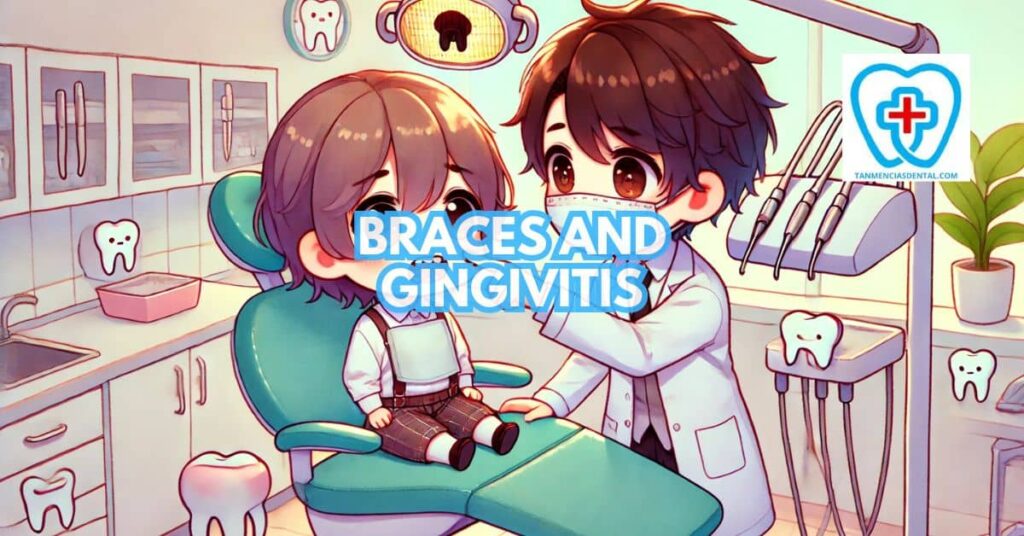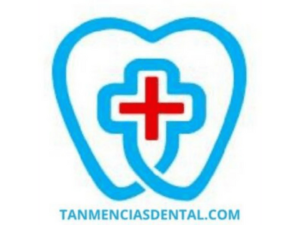Braces help straighten teeth, but they can also make it harder to keep gums healthy.
Plaque buildup around brackets and wires can lead to gingivitis, a common gum disease.
Gingivitis occurs when bacteria in plaque cause the gums to become inflamed and irritated.
If not treated early, it can progress into a more serious gum condition, affecting overall oral health.
Understanding why braces contribute to gingivitis and how to prevent it is essential for maintaining a healthy smile.
1. Understanding Gingivitis and Its Symptoms
Gingivitis is the earliest stage of gum disease, but it should not be ignored.
It occurs when plaque, a sticky layer of bacteria, builds up along the gumline and causes inflammation.
Common symptoms include swollen, red gums that may bleed when brushing or flossing.
Some people also experience persistent bad breath and gum tenderness, making daily oral care uncomfortable.
If left untreated, gingivitis can lead to more severe infections that may affect the bone supporting the teeth.
🦷 Wondering About Cavity Fillings? Here’s What You Need to Know!
2. How Braces Contribute to Plaque Buildup
Braces create extra spaces where food and bacteria can get trapped, making it harder to clean the teeth properly.
Brackets and wires prevent toothbrush bristles and floss from reaching certain areas, leading to plaque accumulation.
When plaque is not removed, it hardens into tartar, which can only be cleaned by a dentist.
Tartar irritates the gums, causing swelling and increasing the risk of gingivitis.
People with braces must be extra diligent with their oral hygiene to prevent these issues.
🦷 Say Goodbye to Gingivitis: How Dentists Fight Gum Disease!
3. Gum Sensitivity During Orthodontic Treatment
Gums often become more sensitive when someone first gets braces due to the brackets and wires rubbing against the soft tissue.
This irritation can make it painful to eat, brush, or floss properly.
As the gums adjust to the pressure from the braces, they may feel swollen or tender.
If plaque builds up in these areas, sensitivity can worsen, increasing the risk of gingivitis.
Using a soft-bristled toothbrush and rinsing with warm salt water can help reduce discomfort.
🦷 Can Coconut Oil Really Whiten Your Teeth? Find Out Here!
4. Risk Factors for Gingivitis in Braces Wearers
Certain factors make braces wearers more likely to develop gingivitis.
Poor brushing and flossing habits allow plaque to accumulate around brackets and wires.
Eating sugary foods and drinks fuels bacterial growth, leading to increased plaque buildup.
Dry mouth, caused by certain medications or mouth breathing, can also raise the risk of gum disease.
People with a history of gum issues should be especially careful while wearing braces.
🦷 Brushing Benefits You Can’t Afford to Miss!

5. The Importance of Oral Hygiene with Braces
Good oral hygiene is essential for preventing gingivitis while wearing braces.
Brushing after every meal helps remove food particles and bacteria before they cause problems.
Flossing daily, using tools designed for braces, ensures that plaque does not build up in hard-to-reach areas.
Using fluoride toothpaste strengthens teeth and helps prevent cavities around brackets.
Maintaining a consistent oral care routine greatly reduces the risk of gum disease.
🦷 Dental Hygienist vs. Dentist: Why It Matters for Your Smile!
6. Tools for Preventing Gingivitis with Braces
Specialized tools make it easier to clean around braces and prevent gingivitis.
Interdental brushes fit between brackets and wires to remove trapped food.
Floss threaders help guide floss between teeth where regular flossing is difficult.
A water flosser uses a strong stream of water to clean around the gumline and between teeth.
Antibacterial mouthwash kills bacteria that cause plaque and helps keep your breath fresh.
🦷 Why Regular Dental Checkups Are a Must at Every Age!
7. Reversing Gingivitis: Early Detection and Treatment
If gingivitis is detected early, it can be treated before it worsens.
The first step is improving brushing and flossing habits to remove plaque more effectively.
Regular dental cleanings help eliminate tartar that cannot be removed at home.
Dentists may recommend medicated mouthwashes or special toothpaste to reduce gum inflammation.
Ignoring early signs of gingivitis can lead to permanent damage to the gums and supporting bone.
🦷 Electric Toothbrushes: The Hidden Downsides You Need to Know!
8. Complications of Untreated Gingivitis
If gingivitis is not treated, it can develop into periodontitis, a severe gum infection.
Periodontitis causes gums to pull away from the teeth, creating deep pockets where bacteria thrive.
Over time, this infection can destroy the bone that supports the teeth, leading to tooth loss.
Severe gum disease can also affect overall health, increasing the risk of heart disease and diabetes complications.
Treating gingivitis early helps prevent these serious consequences.
🦷 Get the Facts on Brushing: Fun Truths for a Healthier Smile!
9. Regular Dental Care During Orthodontic Treatment
Regular dental visits are essential for braces wearers to keep their gums healthy.
Professional cleanings remove plaque and tartar that home care may miss.
Dentists can check for early signs of gingivitis and recommend treatments if needed.
Orthodontists may adjust braces to reduce areas where plaque collects.
Following a dentist’s guidance helps prevent gum disease and ensures a smoother orthodontic treatment.
🦷 Does Your Coffee Habit Cause Cavities? Let’s Break It Down!
10. Maintaining Healthy Habits for Long-Term Gum Health
Keeping gums healthy does not stop once braces come off.
Brushing twice a day and flossing regularly should remain a lifelong habit.
Eating a balanced diet with less sugar helps prevent plaque buildup and gum disease.
Drinking plenty of water washes away food particles and keeps the mouth hydrated.
Seeing a dentist for routine checkups ensures gum health remains in good condition after orthodontic treatment.
🦷 Professional Dental Care in Marikina for All Your Needs
👨⚕️ Conclusion
Braces make cleaning teeth more challenging, increasing the risk of gingivitis.
However, proper brushing, flossing, and using the right tools can keep gums healthy.
Regular dental visits and good oral care habits help prevent serious complications.
Catching gum problems early makes them easier to treat.
With the right care, people with braces can maintain strong, healthy gums throughout their orthodontic treatment.
😊 Self-Promotion
Looking for a trusted and friendly dental clinic in Parang, Marikina City?
Visit Tan-Mencias Dental Clinic for expert care and a bright, healthy smile!
You can call us at 0917-145-1074, message us on our Facebook page, or reach out through our website’s contact form for any questions.
Our team is always ready to help with your dental needs in a warm and comfortable setting.
Book an appointment today—we can’t wait to see your smile!

